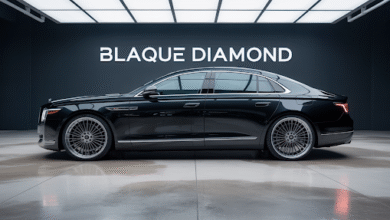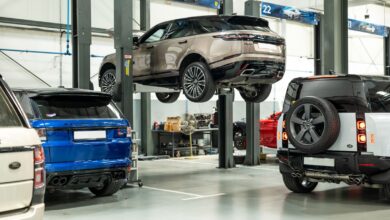Is Los Angeles Redefining Mobility in a City Built for Cars?

For decades, Los Angeles has been synonymous with car culture—a sprawling urban landscape stitched together by freeways, drive-ins, and endless traffic. But as the city continues to evolve, a quiet shift is taking place. The idea of mobility is expanding beyond car ownership, shaped by changing lifestyles, technology, and economics.
From shared rides to rental trucks, e-bikes, and trailers, Angelenos are finding new ways to move their lives, their work, and their ambitions across the city. The question now is: in a city built around the car, are people learning to move differently?
The Paradox of Movement in LA
Los Angeles has always celebrated freedom through movement. Yet that same independence has come at a cost—congestion, limited parking, and pollution. For a long time, the car was the ultimate symbol of success and control, but now, it’s often a source of frustration.
You can spend hours stuck on the 405 or searching for parking downtown, only to realize that owning a vehicle doesn’t necessarily make you mobile.
This paradox is pushing residents to reconsider what transportation really means. It’s no longer just about getting from one place to another—it’s about how and when you move, and what you bring with you.
The Rise of Flexible Mobility
In the last decade, Los Angeles has embraced a wave of flexible transport options. Ride-sharing, micro-mobility, and short-term rentals have redefined what “getting around” looks like. But the evolution goes deeper than personal commuting—it extends to how people move their possessions, their businesses, and even their lifestyles.
Small businesses that once relied on delivery vans now depend on temporary rentals. Creative professionals—set designers, event planners, and production crews—routinely need to transport equipment without owning large vehicles.
This demand for flexibility has given rise to a growing logistics trend: short-term hauling and trailer rentals. Whether it’s a furniture delivery, a film shoot, or a weekend DIY project, people are turning to shared-use equipment to stay agile in a city where space and time come at a premium.
One local example of this evolution is los angeles trailer rental, where residents and businesses can access hauling solutions without the financial and environmental cost of long-term ownership.
Ownership Fatigue and the Freedom of Access
You don’t need to look far to see that ownership is losing its appeal. Homeownership, vehicle ownership, even tool ownership—all are giving way to access-based models.
For younger Angelenos, flexibility trumps permanence. Renting, sharing, and subscribing fit better with their lifestyle rhythms, where every week can bring a new gig, side hustle, or creative project.
And it’s not just cultural—it’s economic. The average cost of car ownership in Los Angeles exceeds $12,000 per year when you account for insurance, fuel, parking, and maintenance. In contrast, flexible rental options allow people to pay only for what they need, when they need it.
This shift reflects a deeper psychological change: the move from possession to possibility.
Sustainability in Motion
There’s also an environmental undertone to this evolution. As California tightens emissions standards and pushes for greener infrastructure, shared and temporary-use systems are proving more sustainable than personal fleets of underused vehicles.
Every shared trailer, rental truck, or utility vehicle represents dozens of owned ones that don’t need to exist. That means less waste, fewer emissions, and more efficient use of materials.
For a city struggling with air quality and urban density, this trend toward access over ownership isn’t just convenient—it’s critical.
The Cultural Layer: Hustle Meets Adaptability
What makes Los Angeles unique is how its culture drives adaptation. This is a city of hustlers—entrepreneurs, filmmakers, contractors, and dreamers. Many work independently, balancing multiple jobs or creative pursuits. That fluidity demands tools that are just as flexible as they are.
A local artisan may use a rented trailer to transport sculptures to an art fair in Silver Lake. A mobile food vendor might use one for seasonal pop-ups. A contractor could rent a flatbed for a short-term project in the Valley.
These stories add up to a bigger narrative: a city finding new ways to move without being anchored to the old symbols of success.
Mobility in Los Angeles isn’t just about cars anymore—it’s about capability.
The Future: Smart Access and Micro-Logistics
As cities like Los Angeles continue to evolve, so will their infrastructure. Expect to see more hybrid mobility systems that blend logistics with sustainability.
Imagine digital platforms that match available trailers or equipment to nearby users in real time. Or storage hubs strategically placed throughout the city, allowing for quick access and drop-off.
Technology will be the bridge between convenience and efficiency—making it possible for more residents to stay mobile without relying on long-term ownership.
In many ways, Los Angeles is already laying the groundwork for this future. Its blend of creativity, necessity, and innovation makes it the perfect test bed for reimagining how urban logistics can work.
Rethinking What It Means to Move
As Los Angeles grows and diversifies, so do its definitions of movement, independence, and success. Owning a car may once have been the dream, but today, the new aspiration is freedom without burden—mobility without limitation.
In that sense, the city that taught the world to love the open road might also be the one that teaches us to move smarter, not just faster.
Because in the Los Angeles of tomorrow, independence won’t come from what we own—but from what we can access when we need it most.




